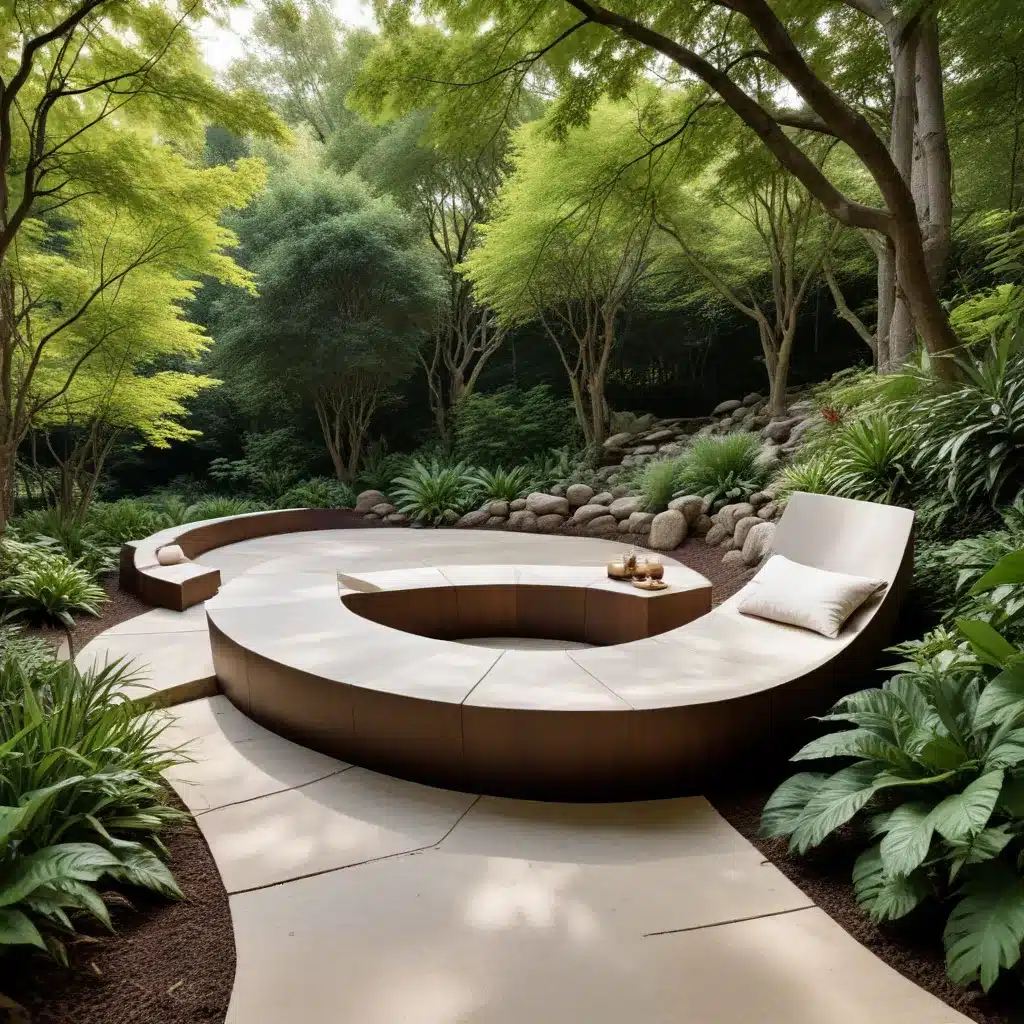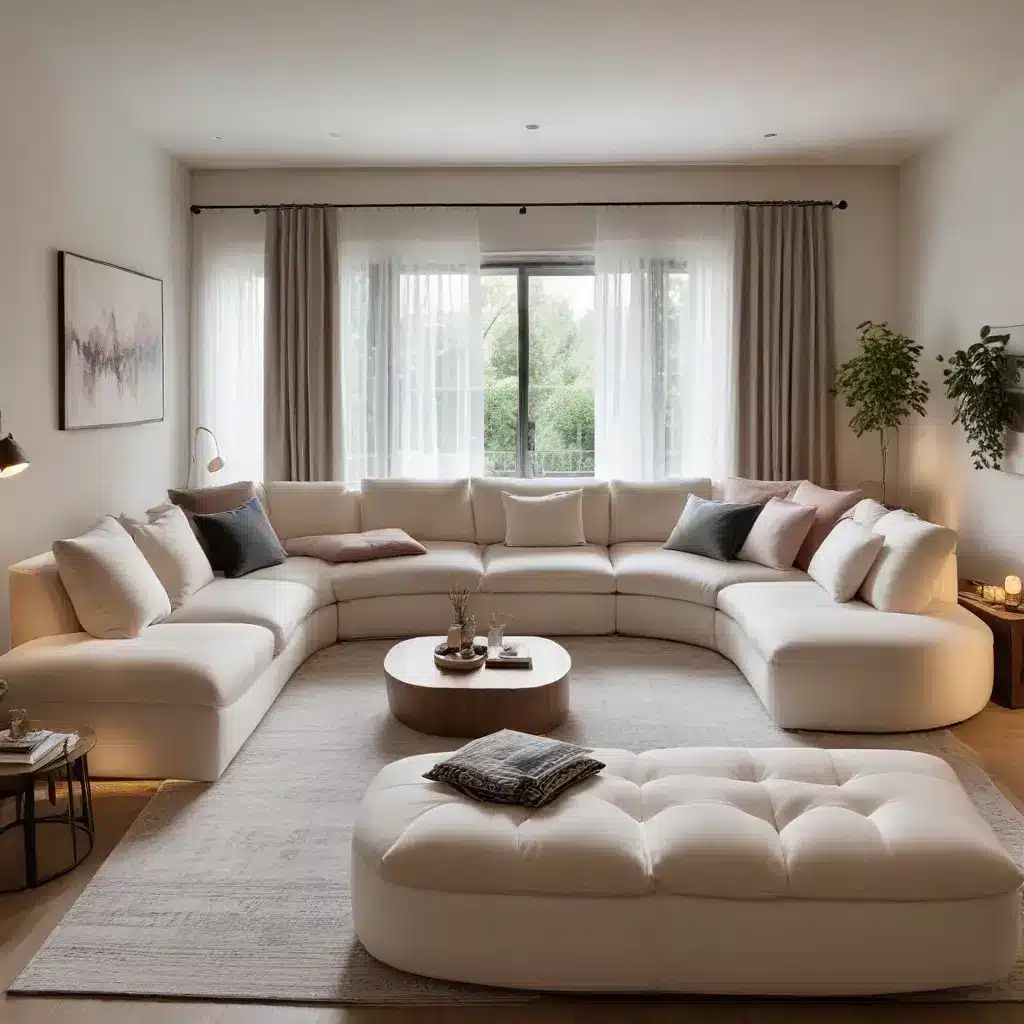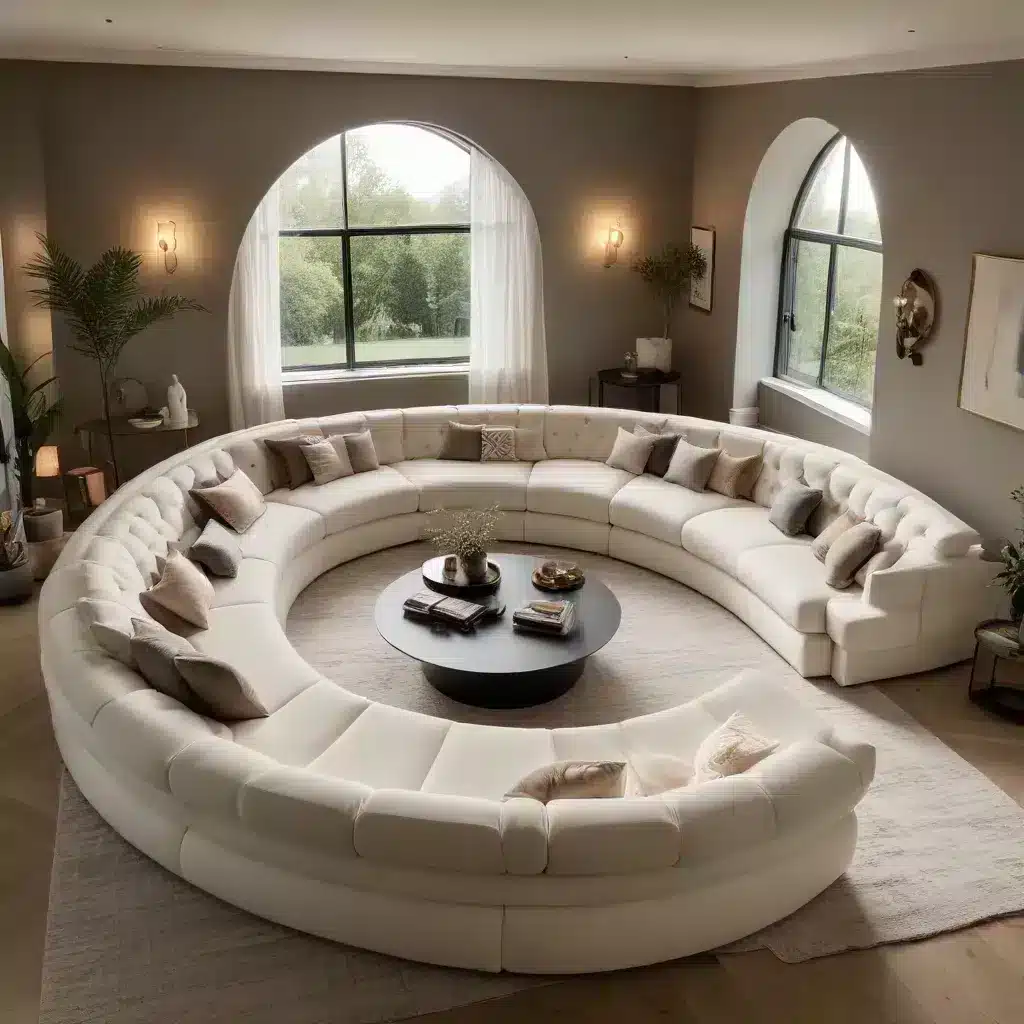
The Foundation of Living Room Design
As a furniture specialist with years of experience, I’ve seen firsthand how a sofa can make or break a living space. It’s not just about having a place to sit; it’s about creating the heart of your home. When you’re looking to select the perfect sofa, there are several factors to consider that go beyond mere aesthetics.
First and foremost, think about the role your sofa will play in your daily life. Will it be the centerpiece for family movie nights? A stylish statement piece for entertaining guests? Or perhaps a cozy nook for your afternoon naps? Understanding the primary function of your sofa will guide you in making the right choice.
Consider the size of your room and how the sofa will fit within it. A common mistake I see is choosing a sofa that’s too large for the space, making the room feel cramped. On the flip side, a sofa that’s too small can look out of place and fail to provide adequate seating. Take measurements of your room and the area where you plan to place the sofa. Don’t forget to account for traffic flow around the furniture.
Comfort Meets Style: Choosing the Right Curves
When it comes to sofa design, curves are making a big comeback. Gone are the days when boxy, straight-lined sofas dominated living rooms. Today, we’re seeing a resurgence of softer, more organic shapes that invite you to sink in and relax.
Curved sofas offer several advantages. They can soften the look of a room with hard angles, create a more inviting atmosphere, and even make a space feel larger by encouraging a natural flow around the furniture. But how do you choose the right curve for your space?
If you have a large, open-plan living area, a dramatic C-shaped sofa can create a stunning focal point. These sofas are perfect for conversation, as they naturally encourage people to face each other. For smaller spaces, consider a sofa with subtle curves on the arms or back. This can add visual interest without overwhelming the room.
Remember, the curve of your sofa should complement the other design elements in your space. If you have a lot of straight lines in your architecture or other furniture pieces, a curved sofa can provide a beautiful contrast. However, if your room already has many curved elements, you might want to opt for a sofa with more subtle curves to avoid a chaotic look.
The Science of Sofa Comfort
As someone who’s spent years in the furniture industry, I can tell you that comfort is not just about how a sofa feels when you first sit down. It’s about how it supports your body over time, how it withstands daily use, and how it contributes to your overall well-being.
Let’s talk about the foundation of comfort: the frame. A high-quality sofa frame is typically made from hardwood, such as oak, beech, or ash. These woods are known for their durability and resistance to warping. Avoid sofas with frames made from particleboard or metal, as these can break down more quickly and lead to sagging.
Next, consider the suspension system. This is what gives the sofa its bounce and support. The best sofas use either eight-way hand-tied springs or sinuous springs. Eight-way hand-tied springs are the gold standard, offering superior comfort and longevity, but they come with a higher price tag. Sinuous springs, while less expensive, can still provide excellent support if well-constructed.
The cushion filling is where science really comes into play. Traditional foam cushions are comfortable initially but can lose their shape over time. High-resilience foam is a step up, offering better durability and support. For the ultimate in comfort, look for cushions that combine high-density foam with a layer of softer foam or fiber on top. This creates a seat that’s supportive yet soft.
For those who prioritize eco-friendly options, there are now innovative cushion fillings made from recycled materials or plant-based foams. These can offer comparable comfort to traditional materials while being kinder to the environment.
Upholstery: The Skin of Your Sofa
Choosing the right upholstery for your sofa is crucial not only for aesthetics but also for longevity and ease of maintenance. As someone who’s dealt with countless fabric swatches, I can tell you that the options are vast, but not all are created equal.
Let’s start with natural fibers. Cotton is breathable and soft but can wrinkle and stain easily. Linen offers a beautiful texture but can be prone to wrinkling and isn’t ideal for households with pets. Wool is durable and naturally stain-resistant but can be itchy for some people.
Synthetic fibers have come a long way in recent years. Polyester and nylon are both strong and resistant to wear and tear. They’re also typically less expensive than natural fibers. Microfiber, a type of polyester, is exceptionally soft and easy to clean, making it a popular choice for families with children or pets.
For those seeking luxury, leather is hard to beat. It’s durable, easy to clean, and develops a beautiful patina over time. However, it can be cold to the touch initially and may not be suitable for those with allergies.
When selecting your upholstery, consider the fabric’s durability rating. This is often measured in double rubs, with higher numbers indicating greater durability. For a family sofa that will see daily use, look for fabrics with at least 15,000 double rubs.
Color and pattern are personal choices, but remember that lighter colors will show dirt more easily, while patterns can help hide stains. If you’re unsure, neutral colors are always a safe bet and can be easily accessorized with colorful throw pillows.
The Art of Sofa Placement
Once you’ve selected your perfect sofa, the next challenge is placing it in your room. This is where the art of furniture arrangement comes into play, and it’s a skill I’ve honed over years of working with clients.
The first rule of sofa placement is to consider the room’s focal point. This could be a fireplace, a large window with a view, or a TV. Your sofa should be positioned to take advantage of this focal point while also allowing for easy conversation and movement around the room.
In larger rooms, don’t be afraid to float your sofa away from the walls. This can create a more intimate seating area and can make a large room feel cozier. Use area rugs to define these spaces and anchor your furniture groupings.
For smaller spaces, consider a loveseat or apartment-sized sofa. These smaller pieces can provide comfortable seating without overwhelming the room. You might also look into modular sofas that can be reconfigured to suit different needs.
Remember to leave enough space for traffic flow. A good rule of thumb is to leave at least 30 inches of walking space around the sofa. This ensures that people can move comfortably through the room without feeling cramped.
If you’re working with an open-plan space, use your sofa to define different areas. For example, you can use the back of a sofa to create a visual barrier between a living area and a dining space.
Maintaining Your Sofa’s Beauty
As someone who’s seen sofas in all states of wear and tear, I can’t stress enough the importance of proper maintenance. A well-cared-for sofa can last for decades, while a neglected one might need replacing in just a few years.
Regular vacuuming is crucial, even if you don’t see visible dirt. Use the upholstery attachment on your vacuum cleaner to remove dust and debris from the surface and crevices of your sofa. For leather sofas, use a soft brush attachment to avoid scratching the surface.
Addressing spills immediately is key to preventing stains. Blot (don’t rub) the spill with a clean, white cloth. For water-based spills on fabric upholstery, a mixture of mild soap and water can be effective. However, always test any cleaning solution on an inconspicuous area first.
Rotate your cushions regularly to ensure even wear. This is especially important for sofas that get daily use. If your cushions have removable covers, follow the care instructions carefully when washing them.
For leather sofas, use a leather conditioner every 6-12 months to keep the leather supple and prevent cracking. Avoid placing leather furniture in direct sunlight, as this can cause fading and drying.
Consider using arm covers or throws on areas that see the most wear, such as the arms and seat cushions. These can be easily washed or replaced, extending the life of your sofa.
The Future of Sofa Design
As we look to the future, the world of sofa design is evolving in exciting ways. Technology is playing an increasingly important role, with smart sofas that incorporate charging stations, built-in speakers, and even adjustable firmness settings.
Sustainability is also at the forefront of sofa design. We’re seeing an increase in the use of recycled and eco-friendly materials, not just in the upholstery but in the frame and cushion filling as well. Some manufacturers are even exploring biodegradable materials for sofa construction.
Modular designs are becoming more popular, allowing for greater flexibility in how we use our living spaces. These sofas can be reconfigured to suit different needs, from intimate gatherings to larger parties.
As our homes continue to serve multiple functions, we’re likely to see more multifunctional sofas. Think sofas with built-in storage, pull-out beds, or adjustable backrests for different seating positions.
The trend towards curves is likely to continue, with designers pushing the boundaries of what’s possible in sofa shapes. We might see more organic, sculptural forms that blur the line between furniture and art.
Bringing It All Together
Choosing the perfect sofa is a blend of art and science, comfort and style, practicality and personal taste. As you embark on your sofa-selecting journey, remember that this piece of furniture will be at the center of countless moments in your home.
Take your time in making your decision. Visit showrooms to test out different styles and comfort levels. Don’t be afraid to ask questions about construction and materials. And most importantly, choose a sofa that resonates with your personal style and lifestyle needs.
Remember, a sofa is more than just a piece of furniture. It’s where you’ll curl up with a good book, share laughs with friends, and perhaps even take the occasional nap. By choosing wisely and caring for your sofa properly, you’re investing in years of comfort and enjoyment.
As you consider your options, why not explore the range of sofas available at Sofa Spectacular? With their commitment to quality and style, you’re sure to find a piece that will be the perfect addition to your home.
Happy sofa hunting, and may your living room be filled with comfort, style, and countless happy memories!



